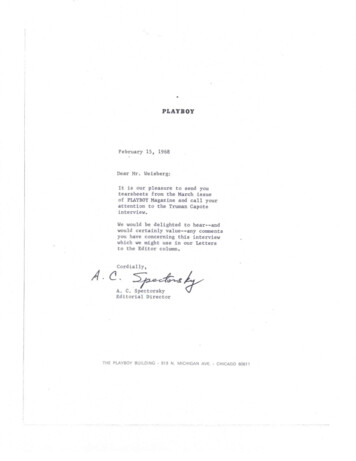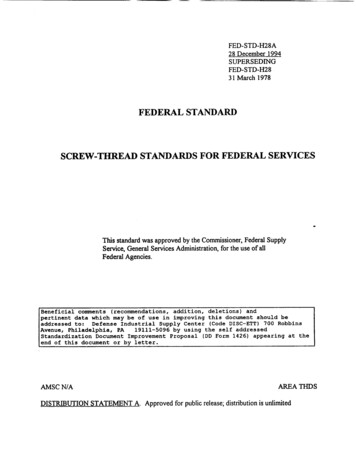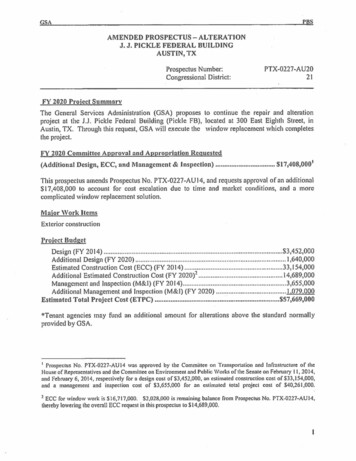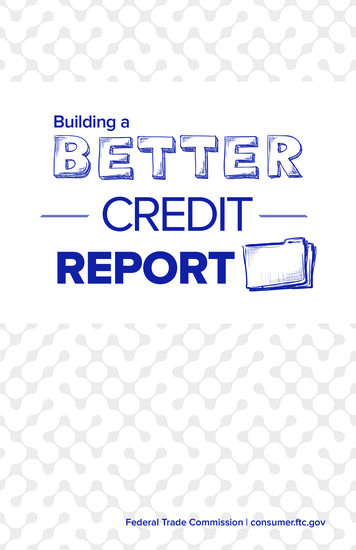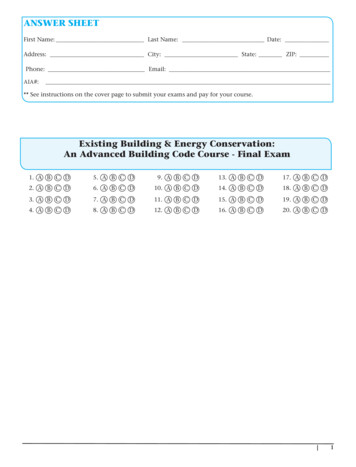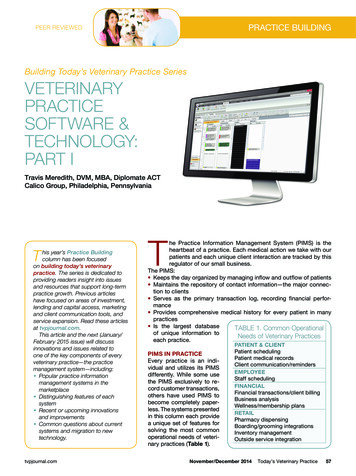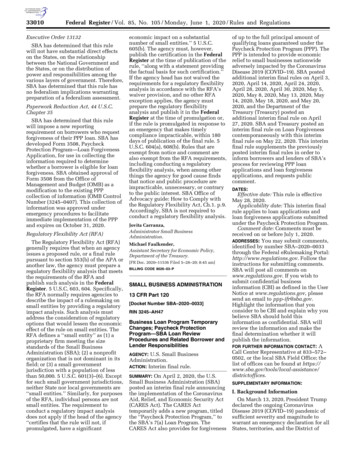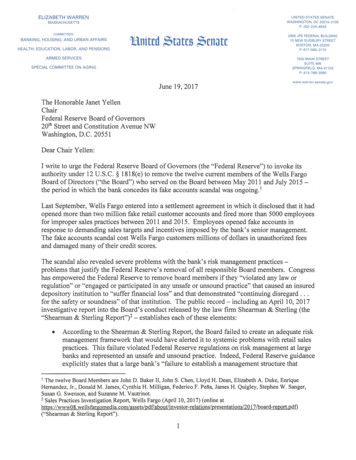
Transcription
ELIZABETH WARRENUNITED STATES SENATEWASHINGTON, DC 20510-2105P: 202-224-4543MASSACHUSETISCOMMITTEESoBANKING, HOUSING, AND URBAN AFFAIRSHEALTH, EDUCATION, LABOR, AND PENSIONStlnitrd tatrs rnatrARMED SERVICES2400 JFK FEDERAL BUILDING15 NEW SUDBURY STREETBOSTON, MA 02203P: 617-565-31701550 MAIN STREETSUITE 406SPRINGFIELD, MA 01103P: 413- 788- 2690SPECIAL COMMITTEE ON AGINGwww.warren.senate.govJune 19, 2017The Honorable Janet YellenChairFederal Reserve Board of Governors20th Street and Constitution Avenue NWWashington, D.C. 20551Dear Chair Yellen:I write to urge the Federal Reserve Board of Governors (the "Federal Reserve") to invoke itsauthority under 12 U.S.C. § 1818(e) to remove the twelve current members of the Wells FargoBoard of Directors ("the Board") who served on the Board between May 2011 and July 2015 the period in which the bank concedes its fake accounts scandal was ongoing. 1Last September, Wells Fargo entered into a settlement agreement in which it disclosed that it hadopened more than two million fake retail customer accounts and fired more than 5000 employeesfor improper sales practices between 2011 and 2015. Employees opened fake accounts inresponse to demanding sales targets and incentives imposed by the bank's senior management.The fake accounts scandal cost Wells Fargo customers millions of dollars in unauthorized feesand damaged many of their credit scores.The scandal also revealed severe problems with the bank's risk management practices problems that justify the Federal Reserve's removal of all responsible Board members. Congresshas empowered the Federal Reserve to remove board members if they "violated any law orregulation" or "engaged or participated in any unsafe or unsound practice" that caused an insureddepository institution to "suffer financial loss" and that demonstrated "continuing disregard . .for the safety or soundness" of that institution. The public record - including an April 10, 201 7investigative report into the Board's conduct released by the law firm Shearman & Sterling (the"Shearman & Sterling Report")2 - establishes each of these elements: According to the Shearman & Sterling Report, the Board failed to create an adequate riskmanagement framework that would have alerted it to systemic problems with retail salespractices. This failure violated Federal Reserve regulations on risk management at largebanks and represented an unsafe and unsound practice. Indeed, Federal Reserve guidanceexplicitly states that a large bank' s "failure to establish a management structure that1 The twelve Board Members are John D. Baker II, John S. Chen, Lloyd H. Dean, Elizabeth A. Duke, EnriqueHernandez, Jr., Donald M. James, Cynthia H. Milligan, Federico F. Pefia, James H. Quigley, Stephen W. Sanger,Susan G. Swenson, and Suzanne M. Vautrinot.2 Sales Practices Investigation Report, Wells Fargo (April 10, 2017) (on line athttps ://wwwO 8. we IIs fargomedia.com/assets/pdf/about/investor-re lations/presentati ons/201 7/board-report. pd!)("Shearman & Sterling Report").1
adequately identifies, measures, monitors, and controls the risks involved in its variousproducts and lines of business has long been considered unsafe and unsound conduct." 3 The Board's improper conduct caused Wells Fargo to suffer massive financial losses,including nearly 200 million in settlements with government entities and exposure tosubstantial additional losses in private litigation. It also caused long-lasting reputationaldamage to the bank that has eroded the bank's customer base. 4 The Board's failure to establish adequate risk management practices and uncover theseimproper retail sales practices demonstrated "continuing disregard" for the bank's safetyand soundness. The Shearman & Sterling Report details the Board's refusal to seriouslyaddress improper sales practices despite years ofred flags. By any measure, a bank's riskmanagement practices cannot be adequate if they permitted more than 5000 employees toopen more than two million sham accounts in a four-year span.While other federal regulators with jurisdiction over this scandal - the Consumer FinancialProtection Bureau (CFPB) and the Office of the Comptroller of the Currency (OCC)- havetaken steps to hold Wells Fargo accountable and promote the integrity of the banking system, theFederal Reserve has done nothing to date, despite its ample statutory authority. I urge you to usethe tools Congress has given you to remove the responsible Board members and protect thecontinued safety and soundness of one of the country's largest banks.I. BackgroundOn September 8, 2016, the CFPB, OCC, and the City and County of Los Angeles announced asettlement with Wells Fargo relating to the bank's improper retail sales practices. 5 Thesettlement imposed a total of 185 million in penalties on Wells Fargo after they "openedroughly 1.5 million bank accounts and applied for 565,000 credit cards that may not have beenauthorized by customers" in an effort to meet unrealistic sales targets from May 2011 throughJuly 2015. 6 Wells Fargo also admitted that it terminated roughly 5,300 employees during this"Rating Risk-Management Processes and Internal Controls ofBHCs Having 50 Billion or More in Total Assets,"Federal Reserve Supervisory Manual 4070.1, 1(July2016) (online al/bhc/4000p2.pdf) (emphasis added).4 See Emily Glazer, "Wells Fargo's New Mission: Growth, Not Scandal," Wall Street Journal (June 8, 2017) (onlineat n-pivot-from-scandal-to-growth-1496914205?tesla y); seealso Matt Egan, "Wells Fargo's reputation is tanking, survey finds," CNN Money (Oct. 24, 2016) (online athttp://money.cnn.com/2016/ stomers/index.html); see alsoGillian B. White, "The Toll of Wells Fargo's Account Scandal," The Atlantic (Apr. 19, 2017) (online 7 /04/wells-fargo/523 578/).5 Michael Corkery, "Wells Fargo Fined 185 Million for Fraudulently Opening Accounts," New York Times (Sept.8, 2016) (online at https://www rgo-fined-for-years-of-harm-tocustomers.html); see also Consent Order 2016-CFPB-0015, Consumer Financial Protection Bureau (Sept. 8, 2016)(online at 6 cfpb WFBconsentorder.pdf).6 Michael Corkery, "Wells Fargo Fined 185 Million for Fraudulently Opening Accounts," New York Times (Sept.8, 2016) (online at .html).32
time period - that is, approximately 1 percent of the employees in its Community Bank groupwere fired each year - in relation to its sales goals. 7In its consent order, the CFPB stated that Wells Fargo's Community Bank had (1) "openedunauthorized deposit accounts for existing customers and transferred funds to those accounts"without their knowledge; (2) "submitted applications for credit cards in consumers' names usingconsumers' information" without customers' knowledge or consent; (3) "emolled consumers inonline-banking services" without their knowledge or consent; and (4) "ordered and activateddebit cards using consumers' information" without obtaining their consent. 8Shortly after the settlements were announced, Wells Fargo created an Oversight Committee to"conduct a comprehensive investigation of sales practice issues that arose in Wells Fargo'sCommunity Bank." 9 Four members of the Board sat on the Committee: Stephen Sanger,Elizabeth Duke, Donald James, and Emique Hernandez, Jr. 10 The Committee retained the lawfirm Shearman & Sterling to conduct an independent investigation and write a report on the fakeaccounts scandal at the bank. The Committee released Shearman & Sterling's 110-pageinvestigative report on April 10, 2017.The Shearman & Sterling Report was the result of exhaustive investigation. The firm"conducted 100 interviews of current and former employees," focusing on "senior members ofmanagement across all of the areas that had significant contact with sales practice issues." 11Shearman & Sterling also reviewed over 35 million documents from Wells Fargo, in addition toreviewing "information concerning more than 1,000 investigations of lower level employeesterminated for sales integrity violations." 12 And the firm retained FTI Consulting, Inc., a"forensic consulting and data analytics firm," to review Wells Fargo's accounts and systems. 13Two weeks after the release of the Shearman & Sterling Report, the Wells Fargo shareholdersvoted to retain all fifteen Board members, including the twelve who served on the Board duringsome or all of the period covered by the bank's September 2016 settlement agreement. 14Although each Board member received at least 50 percent of the vote, shareholder support hithistoric lows for several members who served throughout all or part of the fake accountsscandal. 15 Chairman Sanger, along with three others, failed to reach 60 percent shareholdersupport, and none of the twelve holdover Board members reached 80 percent support. 16 Alltwelve holdover Board members are still serving on the Board as of today.Id.; see also Shearman & Sterling Report.Consent Order 2016-CFPB-0015, Consumer Financial Protection Bureau (Sept. 8, 2016) (online 016 cfpb WFBconsentorder.pdf).9 Shearman & Sterling Report at I.10 Id. at 2.11 Id. at 2-3.12 Id. at 3.13 Id.14 Stacy Cowley, "Wells Fargo Shareholders Tepidly Re-elect Bank's Directors," New York Times (Apr. 25, 2017)(on line at https://www.nytimes.com/2017 s Id.16 Dan Freed and Ross Kerber, "Wells Fargo board gets black eye in shareholder vote," Reuters (Apr. 25, 2017)(online at unts-meeting-idUSKBNl 7ROAM).783
II. The Federal Reserve Is Authorized to Remove the Holdover Wells Fargo BoardMembers.The Federal Reserve has the legal authority to remove Wells Fargo Board members under 12U.S.C. § 1818(e). The statute empowers the Federal Reserve to "remove [a] party from office orto prohibit any further participation by such party, in any manner, in the conduct of the affairs ofany insured depository institution." 17 Such parties include "[a]ny director. . of [a] depositoryinstitution holding company." 18Among other reasons, the Federal Reserve is authorized to remove a director if she "violated .any law or regulation" or "engaged or participated in any unsafe or unsound practice," 19 and thatconduct caused the insured depository institution "financial loss or other damage" anddemonstrated "continuing disregard . for the safety or soundness" of the institution. 20III. The Federal Reserve Should Remove the Holdover Wells Fargo Board Members.The Federal Reserve should exercise its authority under 12 U.S.C. § 1818(e) to remove thetwelve holdover Wells Fargo Board members. The conduct of these Board members satisfies therequirements of Section 1818(e).A. The Holdover Board Members Violated Federal Reserve Regulations and Participatedin Unsafe and Unsound Practices by Failing to Establish an Adequate Risk ManagementStructure.The failure of the Wells Fargo Board to create adequate risk management practices - as detailedin the Shearman & Sterling Report- both violated Federal Reserve regulations and constitutedunsafe and unsound practices under Federal Reserve guidance.In 2014, the Federal Reserve promulgated regulations applying enhanced prudential standards tobank holding companies with 50 billion or more in assets. 21 The regulations went into effect onJanuary 1, 2015. Wells Fargo is subject to these enhanced standards.The enhanced prudential standards include standards relating to risk management. Thosestandards state that a "bank holding company's global risk-management framework must becommensurate with its structure, risk profile, complexity, activities, and size and must include:" "Processes and systems for identifying and reporting risks and risk-managementdeficiencies, including regarding emerging risks, and ensuring effective and timelyimplementation of actions to address emerging risks and risk-management deficiencies· for its global operations;"12 U.S.C. § 1818(e); See 12 U.S.C. § 1813(q)(3).12 C.F.R. § 359.l(h).19 12 U.S.C. § 1818(e)(A)20 Id§ 1818(e)21 Board of Governors of the Federal Reserve System, "Federal Reserve Board approves final rule strengtheningsupervision and regulation of large U.S. bank holding companies and foreign banking organizations," press release(Feb. 18. 2014) (on line at https /bcreg2014021 Sa.htm).17184
"Processes and systems for establishing managerial and employee responsibility for riskmanagement;" "Processes and systems for ensuring the independence of the risk-management function;"and "Processes and systems to integrate risk management and associated controls withmanagement goals and its compensation structure for its global operations."22The Federal Reserve has also stated that failing to create an adequate risk managementframework is a form of unsafe and unsound conduct. In a set of guidelines the Federal Reserveissued last year on risk management processes at institutions with more than 50 billion in assets,the Federal Reserve stated:· A bank holding company's failure to establish a management structure thatadequately identifies, measures, monitors, and controls the risks involved in itsvarious products and lines of business has long been considered unsafe andunsound conduct. 23The Shearman & Sterling Report establishes that the holdover Wells Fargo Board membersviolated the Federal Reserve's risk management regulations and its guidance on unsafe andunsound conduct. The bank failed to establish a "global risk-management framework .commensurate with its structure, risk profile, complexities, [and] activities," and failed to set uprisk-management processes that "ensur[ed] effective and timely implementation of actions toaddress emerging risks and risk-management deficiencies."24The Shearman & Sterling Report describes the bank's highly decentralized and hands-offapproach to risk management, despite a series of red flags about the failure of that approach.Wells Fargo management acknowledged the need to increase oversight of sales practices in2013, and yet "no one from Corporate Risk was assigned responsibility as the 'owner' of thatarea until 2015."25 This was in part due to the "incorrect belief, extending well into 2015, thatimproper [sales] practices did not cause any 'customer harm.' " 26In February 2015, Wells Fargo's internal risk-assessment process for "Noteworthy Risks"downgraded the risks associated with sales practices from "High" to "Medium."27 Just monthslater, in April and May 2015, Carrie Tolstedt, the President of the Community Bank, gave two"highly unsatisfactory" presentations regarding sales practices to the Board's Risk Committee,12 C.F.R. § 252.33(a)(2)."Rating Risk-Management Processes and Internal Controls ofBHCs Having 50 Billion or More in Total Assets,"Federal Reserve Supervisory Manual 4070.1, 1(July2016) (online al/bhc/4000p2.pdf) (emphasis added).24 12 C.F.R. § 252.33(a)(2).25 Shearman & Sterling Report at 63.26 Id. at 14.27 Id. at 69.22235
yet the Board continued to defer to management while taking no direct action to address theproblems. 28During these meetings, Tolstedt reported incomplete numbers on terminations, claimed that theroot cause of sales practice problems was employee misconduct rather than improper incentives,and assured the Board that the bank's controls had been "effective" in detecting the issues. 29 InOctober, the Board was again critical of a presentation on sales practices from the President ofthe Community Bank, but took no direct action. 30 As the Shearman & Sterling Reportacknowledges, Wells Fargo's decentralized risk management allowed Tolstedt to suppresscrucial information and downplay the risks within the Community Bank to the Board. 31In late 2015, years after the problem first arose, and nearly a full year after the obligation toadopt an adequate risk management framework, Wells Fargo finally established a Sales PracticeOversight Group within its Corporate Risk group. 32 In May 2016, the Sales Practice OversightGroup admitted it still had "considerable work to do in order to build a fully functioning,integrated, and sustainable" oversight program. 33 That same month, Wells Fargo finally madechanges to its internal structure in order to remove "organizational impediments" that hadresulted in the Board's ignorance of sales practice issues. 34According to the Shearman & Sterling Report, in September 2016, the Board learned for the firsttime that thousands of employees had been fired for sales practices violations. 35 And in 2017,the Board and the Risk Committee finally begin insisting on more detailed and concrete plansfrom the Community Bank, a practice which the Shearman & Sterling Report admits the Boardshould have begun much earlier. 36Despite its highly decentralized risk management process and its failure to adequately addressimproper retail sales practices, the Board itself assured shareholders in 2013 that it wasresponsible for effective risk management. The Board noted that risk management started "at thetop," and stated that "the Board and the Operating Committee are the starting point forestablishing and reinforcing our risk culture and have overall and ultimate responsibility foroversight of our risks." 37 While the Board claimed it was responsible for risk management in2013, there was, as the Shearman & Sterling Report explains, a "culture of substantialdeference. " 38Wells Fargo's commitment to a decentralized oversight approach and its pattern of inaction inthe face of numerous red flags represent a clear "failure to establish a management structure"Id.Id.30 Id.31 Id.32 Id.33 Id.34 Id.35 Id.36 Id.2829at 70.at 105.at 107.at 8, 11-12, 60.at 70-71.at 71.at 109.at 16-18.37 "Annual Report 2013," Wells Fargo & Company 51 (2014) (online eport.pdf)(emphasis added).38 Shearman & Sterling Report at 13.6
that adequately identified and controlled risks. Simply put, the Board cannot possibly havesatisfied its risk-management obligations under Federal Reserve regulations and guidance whileallowing more than 5000 employees to create more than two million fake accounts over a fouryear span.B. The Improper Conduct of the Holdover Wells Fargo Board Members Caused WellsFargo to Suffer Financial Loss.Wells Fargo suffered significant financial loss as a result of the Board's failures. The regulatorysettlements cost the bank nearly 200 million. 39 A recent class action settlement cost the bankanother 110 million, 40 and, as the Shearman & Sterling Report states, there has been a "cascadeof civil litigation" following the revelation of the scandal. 41Beyond these immediate costs, the scandal has caused "serious harm to Wells Fargo'sreputation" 42 and eroded Wells Fargo's customer base. Since the September 2016 settlement, thebank's revenue has fallen for the first time in years, and its shares are performing worse than theother three largest U.S. banks. 43 Wells Fargo's return on equity sunk to 11.5 percent last quarter,down from a high of 14 percent in 2014. 44 And consumers are abandoning the bank, withindividual checking-account openings down 35% from last year, and credit card applicationsdown 42% during the same period. 45 These trends will have a significant negative impact onWells Fargo's revenue.C. The Conduct of the Holdover Wells Fargo Board Members Demonstrated ContinuingDisregard for the Safety and Soundness of the Bank.The holdover members of the Board exhi
Jun 19, 2017 · the period in which the bank concedes its fake accounts scandal was ongoing. 1 . scandal.15 Chairman Sanger, along

